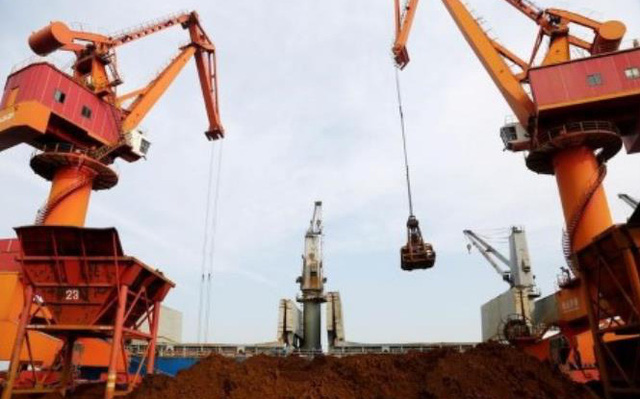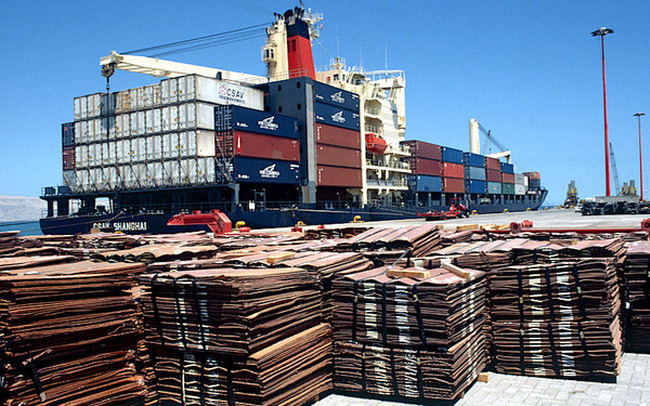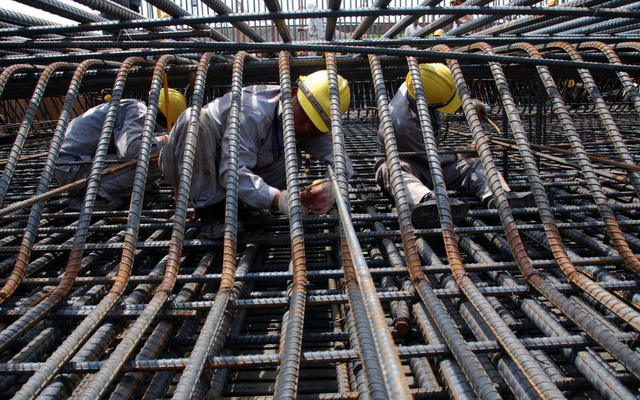Prices of commodities on the commodity market showed mixed fluctuations across all four groups of materials. Industrial Materials and Metals saw the strongest increase in investment cash flow yesterday, pulling the trading value of the whole Department to maintain its 3rd consecutive increase to more than 3,800 billion dong.
On the price list of industrial raw materials, red and blue are divided into two halves. While sugar and coffee prices both recovered after two weak sessions at the beginning of the week, on the opposite side, prices of palm oil and cotton continued to plunge sharply.
Most notably, the drop of up to 8.6% of Malaysian crude palm oil, pushed the price to the lowest level in the past 1 year. The Indonesian government has temporarily halted the export of labor to Malaysia, with thousands of people applying for jobs in plantations, raising expectations of a rebound in Indonesian manufacturing in the second half of the year. The market began to appear rumors about the country’s ability to remove the export tax of 200 USD/ton to settle the large backlog of inventories.
Along with that, concerns about China re-establishing a blockade to prevent a new Covid outbreak, have a double negative impact on palm oil prices when China is one of the main importing countries.
Also affected by the epidemic situation in China, cotton prices continued to plummet 3.45% after the previous floor drop. In the context of the US Department of Agriculture (USDA) cutting its forecast for US cotton exports in its July Supply and Demand report, China’s Ministry of Agriculture recently also lowered its estimate for cotton consumption in crop year 21/22. 200,000 tons due to weak demand from textile enterprises.
Cocoa and rubber also share a downward trend, due to concerns about an economic downturn that will reduce global demand.
Meanwhile, Coffee has gained again after 2 decreasing sessions at the beginning of the week. The standard inventory of Arabica on the US ICE Department continued to decrease to 759,695 bags (60kg), the lowest in nearly 23 years, partly causing concerns about short-term supply shortage as the progress of coffee harvesting in Brazil. still slower than the same period last year.
Sugar commodities also share an upward trend with coffee. Sugar production at the end of June in Central South, Brazil decreased by 14.98% compared to the same period last month, which are positive factors on prices.
Oil prices can’t get back to the $100 mark yet
For the energy group, oil prices have not been able to regain the $100 mark amid a flurry of inflation news, as well as reports from the US Energy Information Administration (EIA) and the US Energy Agency. The International Energy Agency (IEA) is not positive.
The US consumer price index CPI in June was announced to increase by 9.1%, the highest since 1981, dispelling all expectations that inflation has peaked in the US. Traders are now very concerned about the fact that the US Federal Reserve (FED) will aggressively raise interest rates by 100 basis points in the July meeting, instead of the 50-75 basis points as previously announced. there. Another big rate hike is likely to increase the risk of a US recession and erode oil demand.
Besides, EIA’s weekly report is showing that after the peak consumption period of the National Day holiday, the demand for US fuel has gradually cooled down. Gasoline demand, which fell last week to 8.06 million bpd, was lower year-on-year and the lowest seasonally since 1996.
The drop in demand means that most of the output will go to storage. The EIA report continued to show that crude oil inventories increased by 3.3 million barrels in the week ended July 8, gasoline inventories and distillate fuel inventories also increased by 5.8 million barrels and 3, respectively. 4 million barrels.
In the base metals market, COMEX copper gained slightly more than 1% after falling for 3 consecutive sessions thanks to the support area of 3.2 USD/pound. According to Chinese customs data, copper imports in June rose 15.5% from the previous month, the strongest increase in five months as demand increased after the blockade crippled production. . This news supported copper prices to rise slightly, however, the rally may not be sustainable in the face of strong Fed tightening pressure in the future.
Iron ore was the biggest gainer in the metal group, supported by China’s export data that rose at the fastest pace in five months in June, with a 17.9% year-on-year gain, beating the forecast 12% increase by economists.
Trên thị trường nội ịịa, giá thép đang dao ộng từ 16.060 – 17.200 vnd/kg ối với thép cuộn d6 cb240 và 16.510 – 17.510 vnd/kg đ đ đ đ đ đ đ đ đ đ đ đ đ đ đ đ đ đ đ đ đ đ đ đ đ đ đ đ đ đ đ đ đ đ đ đ đ đ đ. kể từ ngày 11/05. Giá quặng sắt hạ nhiệt trên thế giới trong thời gian gần đay tiếp tục gây áp lực đến giá sắt thép trong nước.
Sở Giao dịch Hàng hóa Vietnam (MXV)
Công ty cổ phần xuất nhập khẩu T&G
Địa chỉ: 352 Phố Huế, Phường Lê Đại Hành, Quận Hai Bà Trưng, Hà Nội
Hotline: 02473010868
E-Mail: hrm@tginterjsc.com
Trang-Web: http://tgimportexport.com




















